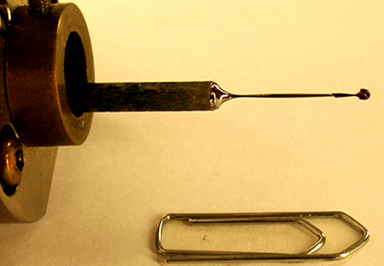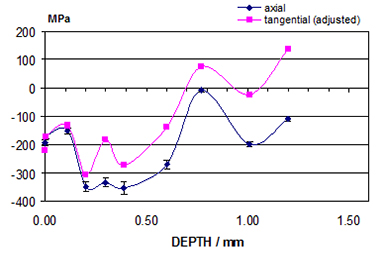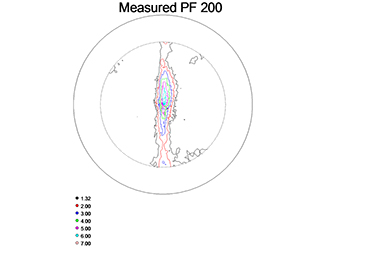Residual stress in pulled tungsten wires

Tungsten wires for the lighting industry are pulled to a thickness of less than 100 µm in a multi-step process. Although the process has been established for decades, longitudinal cracks, known as splits, frequently occur. These splits can expand across long distances along the wire axis in the cooled wire. Residual stress is the driving force for crack expansion. Developing the pulled texture plays an important role in this damaging procedure as it is jointly responsible for direction-dependent properties in the wire.
Determining the texture and residual stress in thin wires by X-rays is a difficult experimental challenge. Defocusing effects can only be controlled with strongly focused primary optical paths resulting in low intensities that lead to acceptable measurement times through the use of the micro-diffractometer specialized for this purpose. Gradual electrochemical erosion is required to determine the residual stress depth distributions, which leads to redistributions of residual stress and needs to be corrected mathematically. Together with Finite Element Modelling of the pulling process, the experiments allow for the optimization of pull parameters to avoid unfavorable high tension residual stress in the edge layer of the wires.
 Fraunhofer Institute for Mechanics of Materials IWM
Fraunhofer Institute for Mechanics of Materials IWM
